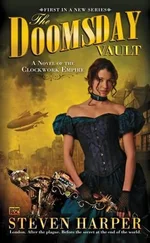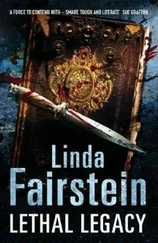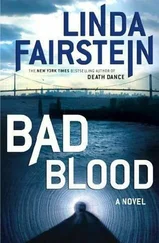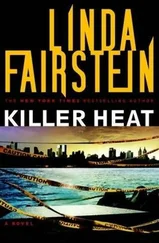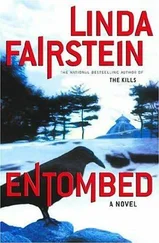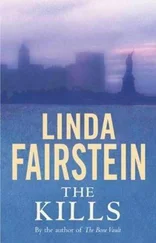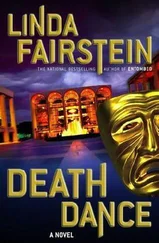“Me, I went straight over here,” Mike said, pointing across the hall past the bottom of the Grand Staircase. “Arms and armor.” The Met had a stunning collection, and although my brothers spent hours wandering around the cases filled with gilded parade armor, presentation swords, and rapiers, I raced past them to get to my dancers and the other portraiture I loved so much.
I asked the woman at the information desk the way to the museum director’s office. She called ahead to Thibodaux’s secretary, who told her we were expected.
“This is where I got hooked on battles and warriors. Couldn’t get enough of that stuff.” Mike had an encyclopedic knowledge of military history. I knew he had studied the field at college, but it had never occurred to me to ask how his interest had originated.
We walked through the galleries of Greek and Roman art to find the bank of elevators to take us upstairs. “They’ve got more than fourteen thousand objects in there, from knights in chain mail to samurai swords. There’s an armor workshop in the basement. Uncle Sam used it in World War Two, copying medieval designs to make flak jackets for the army.”
A middle-aged woman was standing by the elevator door when we got out. “Miss Cooper? I’m Eve Drexler, Mr. Thibodaux’s assistant.” I introduced her to Mike and we accompanied her down the hallway. Her ankle-length flowered print dress swished between her legs as she walked to the door of the office, ushering us past the secretary and into a lavishly decorated room with large windows. The sunny view looked across Fifth Avenue to the handsome town houses that had been converted years ago into the prestigious private girls’ school Marymount. The perks of the directorate were obvious. An ancient hero, sculpted in bronze, was battling a centaur on Thibodaux’s desk, a Savonnerie carpet ran the length of the room, and paintings by recognizable Masters-Cézanne, Goya, Brueghel-were hung on three of the walls.
“Miss Cooper, Mr. Chapman, won’t you sit down?”
The director reached out to shake hands with us, and moved from his chair to join us at a conference table. An ornate silver tray holding an antique coffeepot that had probably served an emperor or queen had been placed in front of Ms. Drexler, who poured for each of us into an ordinary mug.
“I’ve been trying to get as much information for you about that shipment as I possibly could,” Thibodaux began, opening a folder which contained a sheaf of papers.
Drexler seated herself at the far end of the table, opposite her boss, while Chapman and I were next to each other. She opened a leather-bound notebook and seemed to be dating the top page, noting the time and writing down each of our names. Mike flipped open the cardboard cover of his steno pad, a clean one for the beginning of a new case, and made similar notations.
“I’ve made copies of the bill of lading so you can take them along. Have you learned anything this morning from the medical examiner?”
“Nope. They’ll be doing the autopsy right about now.” Mike reached into his jacket pocket and pulled out one of the head shots taken at the morgue this morning. “Brought this along to see whether you happened to know this girl. Maybe she worked here or something.”
Thibodaux took the Polaroid shot, glanced at it, almost doing a double take before turning it facedown on the table. “No, she’s not at all familiar to me. But we are a very big place, Mr. Chapman, and I can’t say for a moment that I know half the people who work here.”
“You looked startled.”
“Well, I am, eh? Such a young woman, it’s a terrible thing. I never expected she would look-so-well, so alive as she does. To be in a coffin like that for some time, well-”
“What do you mean, ‘for some time’?”
“I have absolutely no idea how long she was there, it’s just that I assume she didn’t die yesterday, Mr. Chapman.”
“What’s that assumption based on?”
“Here, why don’t you look these papers over. Eve has made this set for you.” He passed a copy of the multipage document and we started to read it together. “While it is clear that the truck went to New Jersey directly from the museum, the shipment was made up of objects from a number of other institutions. As you can see, there are records of which crates came in when, and from which other museums.”
I scanned the top few pages, squinting at the tiny typewritten descriptions of the various sources. There were amphorae on loan from the Smithsonian, African masks from the American Museum of Natural History, mummy cases from the extensive collection at the Brooklyn Museum, and Asian paintings from the Getty.
“I think you’ve just made our job about a thousand times more difficult. These things all appear to be mixed into the same crates as your own stuff. Why’d that happen?”
“Well, Detective, Mr. Lissen, our shipping manager, tells me that’s because they were repackaged after they arrived here, depending on where they were being sent. We’re in the final planning stages of a huge show that we’ll be mounting next year, and in exchange for some of the treasures that belong to us but are on loan in museums around the world, we’re sending out some of our other art to help fill in those gaps.”
Thibodaux rubbed his eyes before speaking again. He looked paler than he had in formal dress standing on the floodlit platform at the Temple of Dendur yesterday evening. He had probably not slept at all last night, worrying how this dreadful discovery would affect his museum. His French accent seemed more pronounced today, perhaps because of his exhaustion.
“This sarcophagus-number 1983.752-it’s listed on page twelve of that inventory.”
Chapman flipped to find it. “This coffin came back to you last fall. It had been on loan to the Chicago Art Museum, right?”
“So it appears.”
“And it’s been here ever since then. You know where?”
“I don’t, but I’m sure someone can tell you where. Exactly.” Thibodaux rose and walked to his desk, opening the drawer and shaking two tablets into his hand. He washed them down with some ice water that was in a crystal pitcher next to his blotter. This was a headache that would not go away with pills.
“And the other stuff in that crate was all from local institutions, am I reading this right?”
Thibodaux came back and picked up his folder. “Yes, that particular box was full of things going to Cairo, mostly from Natural History, right across Central Park, and from the Brooklyn Museum as well. Some were to stay in Egypt, others had final destinations in other parts of Africa.
“You see the enormity of this problem, Detective? There are almost three thousand people who work inside the Met. We’ve got eight acres of buildings, hundreds of galleries and service areas. There’s a fire department, several restaurants, an infirmary, and a power plant. I can’t even begin to think about having you disturb everyone here, on account of-of…” He gestured to the small Polaroid, on which he had rested his mug.
“Of the young woman who might well have met her death within these walls?” Mike had already dubbed his victim Saint Cleo, and he would fight to bring her murderer to some kind of justice whether or not he ever found out who she was.
“It probably makes sense for us to start talking with Mr. Lissen, and with whomever is in charge of the Egyptian department as well. Weren’t they the gentlemen who were out there in Newark last night?” I tried to take the conversation over from Chapman, who was clearly put off by Thibodaux’s dismissal of the deceased.
“Trustees, curators, artists, students. If you’ve never been in a museum, Detective, you’ll have no understanding of what this all entails.”
Читать дальше

